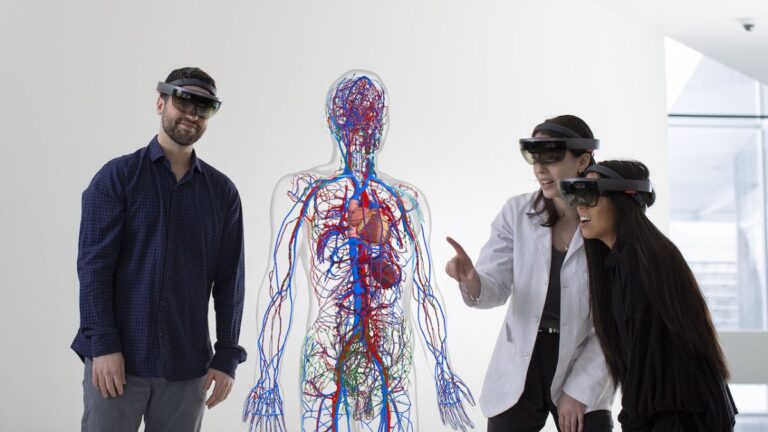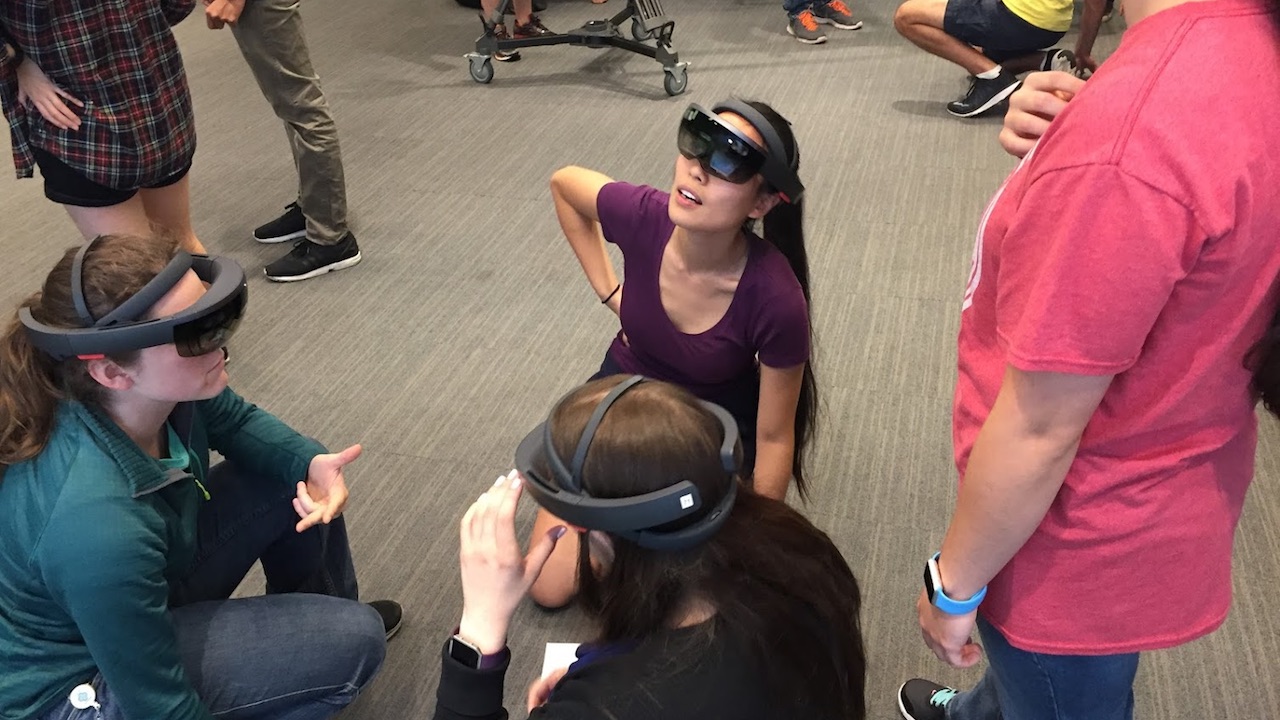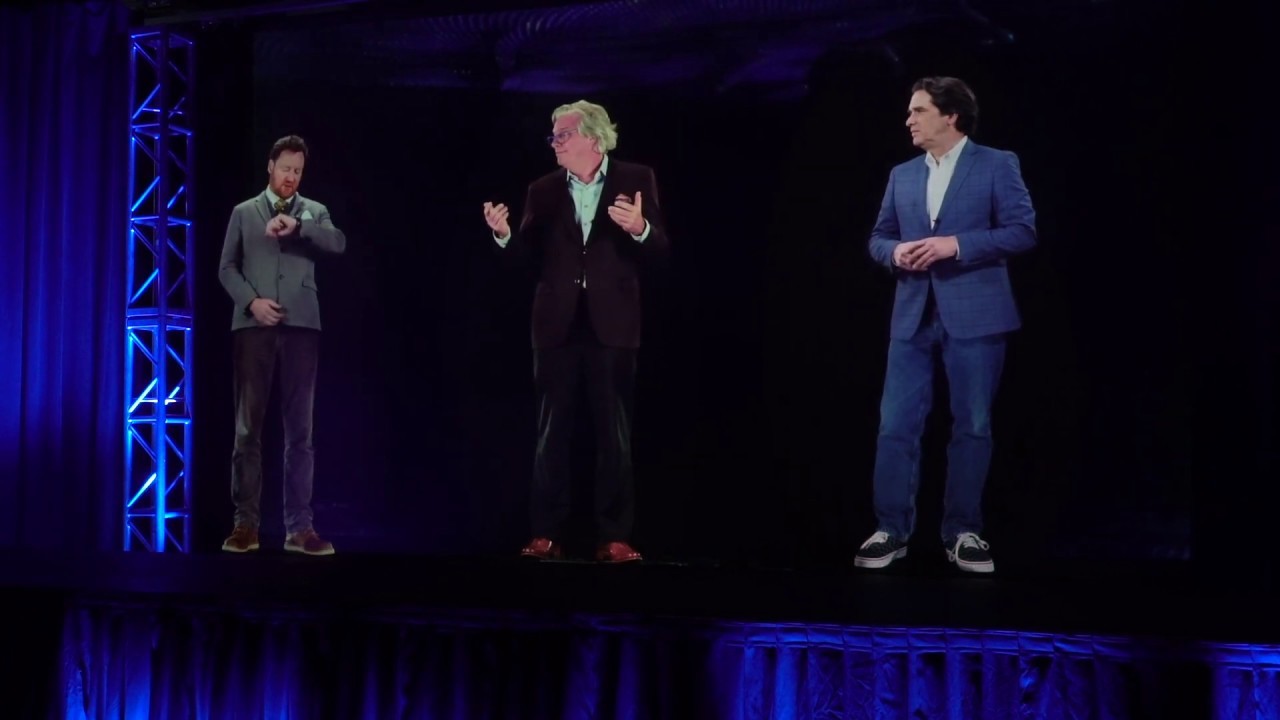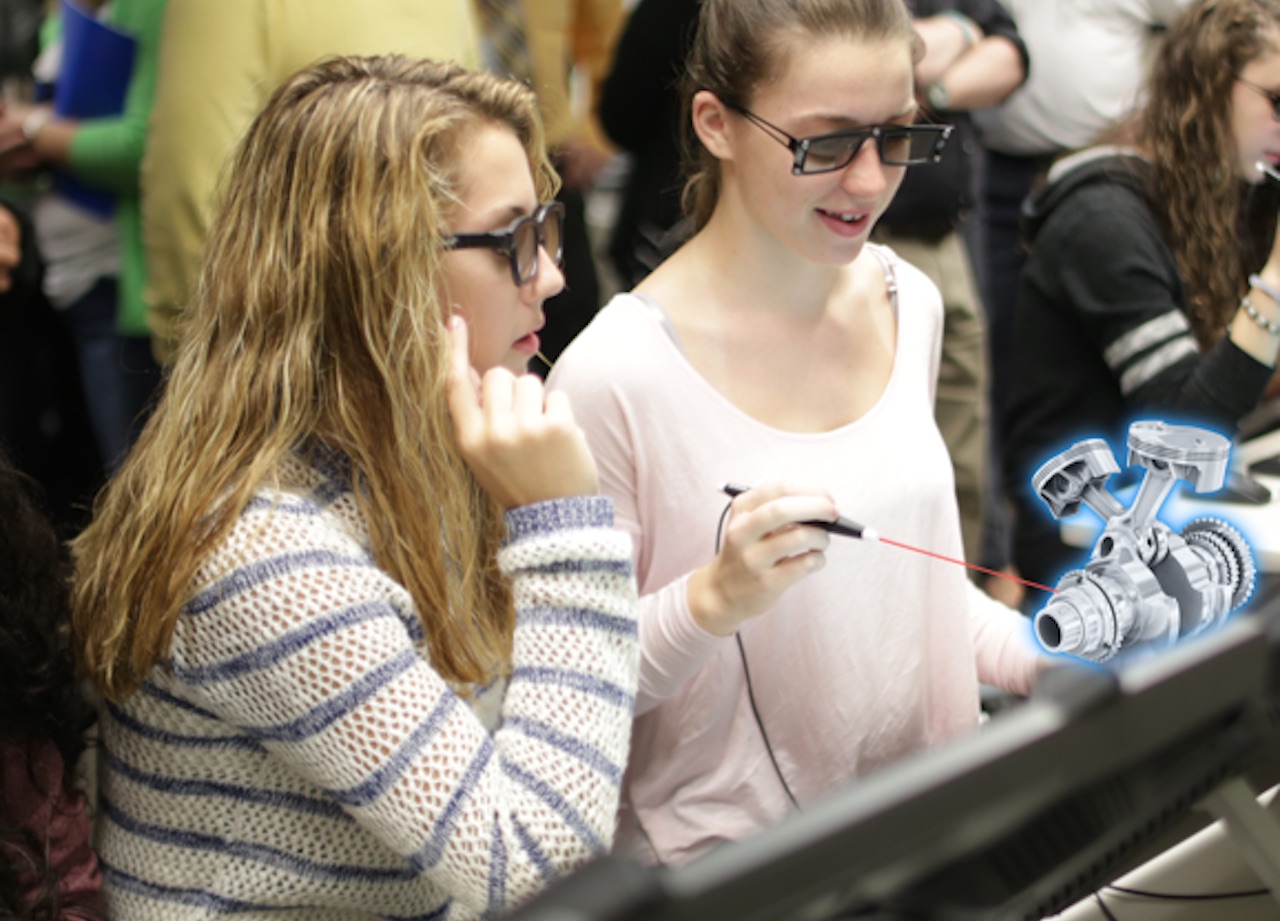
Source: news.google.com
Colleges and universities have been making use of virtual and augmented reality technologies for a while now. As the pandemic has forced institutions to reach more students remotely, AR and VR have the potential to contribute to a more engaging distance learning experience. Recently, audio visual technology spoke with several leaders in the field to gain a better understanding of what this technology can do for higher education.
augmented anatomy
The Case Western Reserve University Health Education Campus in Cleveland officially opened its doors during the summer of 2019. Built in partnership with the Cleveland Clinic, the center brings together students from Case Western’s medical, nursing and dental programs under one roof. It also houses a series of spaces that were specifically designed to provide anatomical education through augmented reality.
Related: Volvo tests new car designs by driving with an XR headset (opens in a new tab)
Developed by what Case Western has called the Interactive Commons (a group of anatomy professors and software engineers), the university’s HoloAnatomy software, in combination with Microsoft HoloLens AR headsets, provides first- and second-year medical students 3D perspectives of the human body, without the need for wet labs and cadavers. Miro Humer, associate vice president of customer experience at Case Western, explained that his team is responsible for supporting HoloLens devices, as well as the technology that runs them.
Humer said that during the planning and design of HoloAnatomy, there were some logistical issues to consider: How long would students need to wear these devices (and would they get too heavy after a certain time)? Would the devices cause headaches? And what about battery life? If a session were to last 45 minutes and classes were scheduled consecutively, would there be time to recharge the devices? “It drives how many devices you have to have on hand,” he said. “Our battery life is usually about two hours, but over time, that goes down.” He added that there was also significant discussion about how to apply HoloLens to student testing: “When we have testing sessions and we use HoloLens for testing, do we have enough devices? How do we monitor those tests? Some tests last an hour and a half, so the devices must be fully charged and the batteries must be in good condition to achieve this.” And, if a device fails during testing, you need to have a backup on hand.

As of press time, only a portion of the Case Western student body had returned to campus, while the rest continued remote learning. Humer reported that when the university went fully remote in the spring of 2020, HoloLens devices were shipped to HoloAnatomy students and classes were able to continue. “Everyone saw how well this can work in a distributed world, where students can be anywhere and continue their education,” he said. During remote classes, students examining the same holographic image can also see each other’s avatars, providing a level of interaction that Humer says goes far beyond Zoom. “We are going to continue our anatomy programs remotely. That would have been impossible in the old world and would have had a significant financial impact on the university if we hadn’t been able to continue with those classes.”
Humer recognized that different people have different expectations of what AR and VR can offer, and for an initiative like this to be successful, genuine collaboration between faculty and technical staff is imperative. “There has to be a very strong partnership between the technology organization and the academic organization within the university to develop an effective solution, more than, say, if you’re just deploying computers in a room,” he said. “It is very aligned with the academic goals and the goals of the students as well, [in terms of] what they can achieve in class. The technological organization has to be very involved in its development”.
Teachers Without Borders
In June of last year, Almo Professional A/V partnered with ARHT Media Inc., a Toronto-based developer of holographic solutions.
Brian Rhatigan, Almo’s director of business development, said his colleague Sam Taylor, executive vice president and chief operating officer, was one of the driving forces behind the partnership. “Sam recognized this as pioneering technology that he felt we wanted to be a part of and could be a mutually beneficial relationship for both companies,” he said. “We have been working cohesively to raise awareness of ARHT Media, which is not necessarily a new company, but rather new to our customer base. We’re spreading the word about the possibilities of things you can do that are really outside of what the traditional professional AV integrator usually thinks of from a presentation and communications perspective.”
At the core of ARHT Media’s technology is the ARHT Engine, software that enables high-quality, low-latency AV streaming with end-to-end encryption. HoloPresence is a 3D display that does not require viewers to wear 3D glasses and allows remote speakers to appear in front of the audience as live holograms. Released in November 2020, HoloPod is a more portable version of HoloPresence (requiring an hour and a half to deploy). Designed for conference rooms, corporate training centers and large corporate boardrooms, HoloPod is a plug-and-play rolling cabinet that can be fully secured when not in use. Virtual Global Stage (VGS), ARHT Media’s low-latency online presentation platform, completes the company’s current lineup.

ARHT Media CEO Larry O’Reilly explained that by using these solutions, universities truly know no borders. “What it enables higher education institutions is to bring in core curriculum instructors or guest lecturers from anywhere in the world and have them present live or pre-recorded, realistic, life-size and fully interactive,” he said.
Last September, global healthcare company Novartis recruited ARHT Media for a sponsored online presentation at the European Respiratory Society (ERS). Tackling the theme “Asthma Trends and Digital Health Solutions,” three peer academic professors based in Australia, Greece and Germany were able to appear together, life-size, on the same virtual global stage and interact with each other.
“They wanted their presentation to look better than a Zoom call, which is what everyone else was doing…and we brought them together so they could do their presentations individually, but more importantly, then have a panel discussion,” O’Reilly said. . “It seemed like they were all in the same room together because there was no latency. It was much more attractive.” According to ARHT Media, the presentation received more than 2,000 views, and since then the company has continued to work with Novartis on other events.
More than a laptop
The platform developed by zSpace Inc., an interactive technology company based in San Jose, CA, integrates AR/VR technology into a wearable computer. The system also includes lightweight glasses (which allow users to see themselves while interacting with the technology) as well as a stylus. Laptop screens are equipped with tracking; As users tilt their heads to look around objects, the software automatically updates so the image is presented in the correct perspective in full HD. Users hold the stylus like a ballpoint pen, with integrated buttons for additional functions.
zSpace also offers a catalog of learning content developed both in-house and by third-party providers.
Michael Carbenia, executive director of career technical education (CTE) at zSpace, actually started out as a customer. Having grown up in the AV industry, Carbenia eventually pursued a career in education; Prior to joining zSpace, he was the Director of CTE for St. Lucie Public Schools in St. Lucie County, FL.

“The idea of AR and VR is that it allows someone to experience something they’ve never experienced before, or maybe they’re afraid of doing it. [experience]Carbenia said. “It will never replace actual work on a car or actual welding. That is not the intention, and I think it is a misconception that people often think about. It’s really about accelerating learning and giving someone a choice to be exposed to something.”
Last fall, Renton Technical College in Renton, WA provided students in the school’s automotive technology program with zSpace laptops preloaded with course curriculum to accommodate remote learning. According to Warren Takata, an automotive technology instructor at the school, the technology improved student engagement.
“Usually when you transition to remote learning, you worry about students completing their work,” Takata said in an announcement. “With zSpace, many of them went beyond the regular lessons. It’s really engaging content, and they immersed themselves even further than their assignments required, teaching themselves about engines and transmissions.”
Takata believes that to maintain this level of commitment, schools must be open to incorporating new technology into their teaching methods. “We’ve taught auto technology the same way for decades,” he said. “Students gravitate toward learning with high-tech tools like zSpace. Programs that don’t embrace new technology will be left behind.”
Carolyn Heinze is a freelance writer/editor.
Read More at news.google.com